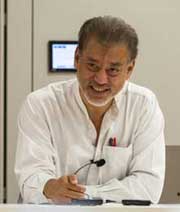KUALA LUMPUR, Malaysia, Jul 24 (IPS) – Many low-income international locations (LICs) proceed to lag additional behind the remainder of the world. On the similar time, excessive poverty is growing once more after many years of decline.

falling additional behind
World output greater than doubled from $36 trillion in 1990 to $87 trillion in 2021 (in fixed {dollars}), however this progress has been inconsistently distributed, leaving most low-income international locations falling additional behind.
Lots of the world’s poorest economies have grown slowly because the Nineteen Sixties. As most growing international locations have made progress, revenue gaps between international locations have narrowed.
The stagnation of the world financial system has adversely affected most international locations and other people, particularly growing international locations that depend on commodity demand and costs. As a lot of the world grows, most low-income international locations fall additional behind.
Lots of of thousands and thousands of individuals have fallen into excessive poverty, and per capita incomes have barely modified in lots of postcolonial international locations. A World Financial institution paper concluded that the state of affairs of the poor is especially dire.
Many poor international locations have but to catch up, not to mention diversify their colonial-style economies. In the meantime, many poor international locations stay mired in battle, exacerbating financial stagnation.
As inhabitants progress progresses slowly, poverty will increase. One other World Financial institution report discovered that slower progress is linked to battle deaths and institutional fragility. Not surprisingly, these international locations are inclined to have a few of the highest poverty charges on the planet.
Worse, international warming will hurt poor tropical international locations and their populations much more. It’s estimated that by 2030, local weather change will push greater than 100 million folks into excessive poverty.
be left behind
Paul Collier, co-author of the paper, recognized 58 international locations in Africa, Asia and Latin America (with a inhabitants of roughly 1.4 billion in 2021) as “backside billion” international locations. Collier believes that almost all nonetheless face issues and have didn’t make progress since then.
These international locations have lengthy suffered from persistent poverty, low progress and improvement failures. Their plight is compounded by civil battle, geographical constraints and infrequently the shortcoming to harness pure assets to speed up financial improvement.
Because the Nineteen Eighties (not the Nineteen Sixties and Nineteen Seventies, as World Financial institution paperwork declare), the underside billion international locations have didn’t develop and have fallen behind. By comparability, the handful of former low-income international locations which have continued to develop quickly now have per capita output not less than 3 times that of different backside billion international locations.
With these few notable exceptions, many of the 58 backside billion international locations stay low-income international locations or have develop into lower-middle-income international locations. Over the previous decade, solely six international locations have reached upper-middle-income nation standing, largely as a result of speedy progress of oil and gasoline.
Though backside billion international locations are current in all areas, about two-thirds (38 of 58 international locations) are in sub-Saharan Africa. They make up 77% of the underside billion. Greater than half are wealthy in pure assets, however most don’t use their mineral wealth to maintain financial progress.
In 2012, the Worldwide Financial Fund categorised 34 of the 58 backside billion international locations as “resource-rich” international locations, with non-renewable useful resource exports and revenues usually exceeding 20% of their complete exports and authorities revenues respectively. However most companies nonetheless expertise little, if any, lackluster progress.
Since 1990, annual per capita revenue progress in sub-Saharan Africa (SSA) has been simply 0.8%. On the similar time, the annual per capita progress charge in East Asia and different areas exceeded 6%, and the worldwide progress charge doubled.
Sluggish progress means common incomes in Africa and different slow-growing low-income international locations lag additional behind the remainder of the world. In line with the World Financial institution’s international poverty line, the variety of poor folks in Africa has elevated by tens of thousands and thousands.
If present progress and poverty developments proceed, many low-income international locations with sluggish or stagnant progress (primarily in Africa) won’t be able to eradicate excessive poverty, not to mention meet up with the remainder of the world.
The poorest and worst case state of affairs
The standard progress mannequin implies that lagging international locations ought to develop sooner than main international locations. The industrialization of East Asia—supposedly emulating early European progress—helps this view.
Progress has slowed in lots of low-income international locations because the flip of the century. The paper discovered that “the underside billion fared the worst” as a result of output per individual had barely grown.
The poorest backside billion don’t obtain integration by catching up with the remaining. Whereas some research present general revenue convergence, the world’s poorest fare comparatively worse.
Now, the underside billion are “falling behind,” whereas these in excessive poverty might rise once more. Whereas there may be some convergence between international locations, the world’s poorest international locations and individuals are prone to lag behind in revenue, even when solely in relative phrases.
Since 2022, the state of affairs has worsened.
Nations within the backside billion lack the coverage and monetary area to confront, not to mention resolve, the looming debt disaster. The state of affairs is exacerbated by a credit score crunch attributable to excessive rates of interest set by the Federal Reserve.
Regardless of many years of recognizing the traits of low-income international locations, the World Financial institution has but to develop methods, insurance policies and devices to beat poverty in low-income international locations. It’s unclear why the World Financial institution endorsed the “backside billion” designation, although it does nothing to advance our understanding of poverty.
IPS ONE Workplace
Follow @IPSNewsUNBureau
Comply with IPS Information United Nations Bureau on Instagram
© Inter Press Service (2024) — All rights reservedAuthentic supply: Inter Press Service
